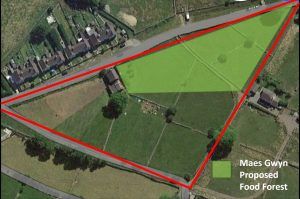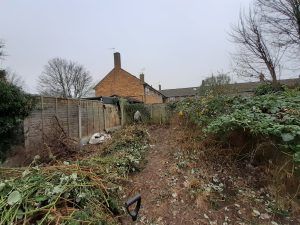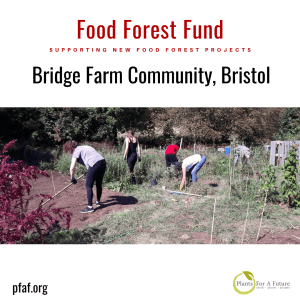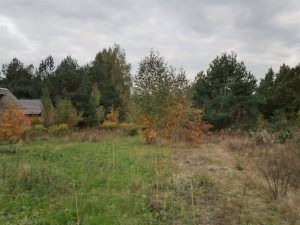by David Gearing, April 2023
Maes Gwyn is a 3.5 acre smallholding in North Wales owned by Dan and Cherise Hunt. It is situated just outside the Snowdonia National Park at an elevation of around 600ft, on the edge of a village, surrounded by farmland on three sides. Since buying the property 8 years ago the owners have installed over 400 mixed hedgerow and wind break saplings, which are starting to mature, improving the biodiversity and forming useful boundaries and windbreaks for the new food forest they are now developing on about one third of the site. They also grow a range of fruit and vegetables in their kitchen/market garden area, which includes a polytunnel.
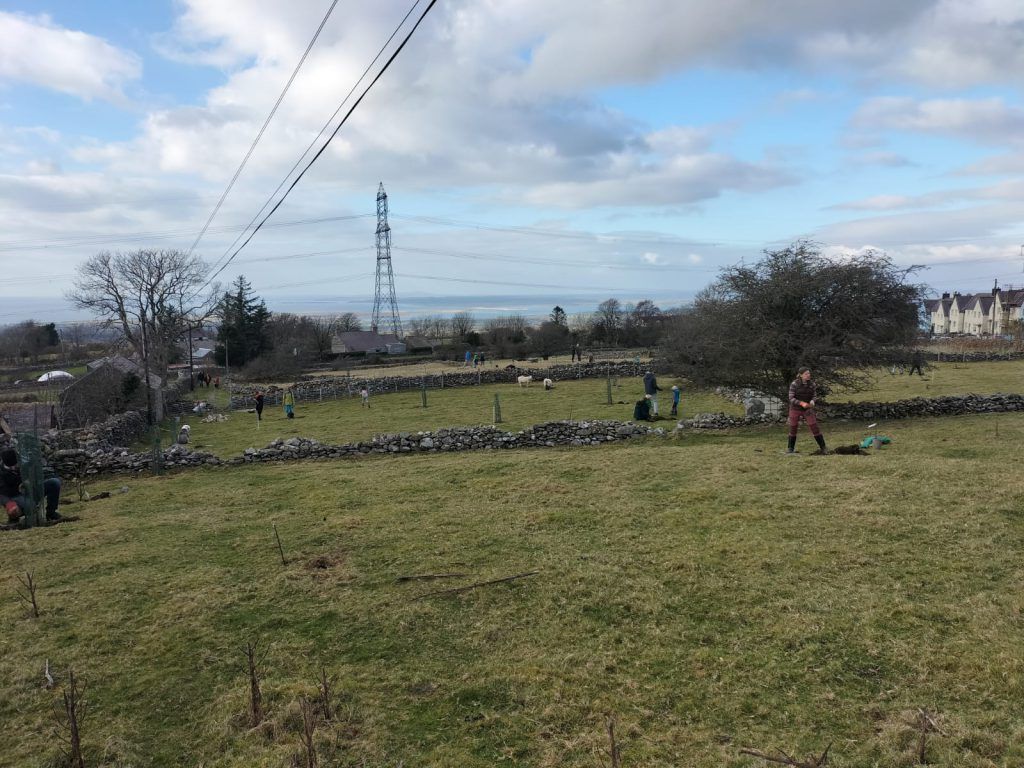
Dan and Cherise approached Plants For A Future to see if we could help fund the purchase of trees and large shrubs to form the upper levels of the food forest; they had already researched what they wanted, identified suppliers of each, and prepared a layout of the plot. We were pleased to be able to offer a grant for these purchases from our Food Forest Fund in two instalments, the first instalment in time for delivery and planting in February 2023. A second instalment of the grant will be available for the remaining 25% of the trees (mainly apples) and for the shrub layer, for planting next winter/spring. The selection criteria have been: temperature hardiness for the area, as diverse a range of fruit as possible including options for future interesting jam making projects etc. (e.g quince), a number of nitrogen-fixing companions, species they had seen be successful in other similar projects, and a selection of nut trees to provide balance to the eventual output. To supplement the plant purchases they will be propagating from existing fruit shrubs to build up stocks for next winter. There may also be a need to be replacements or alternatives for trees that did not survive the first year.
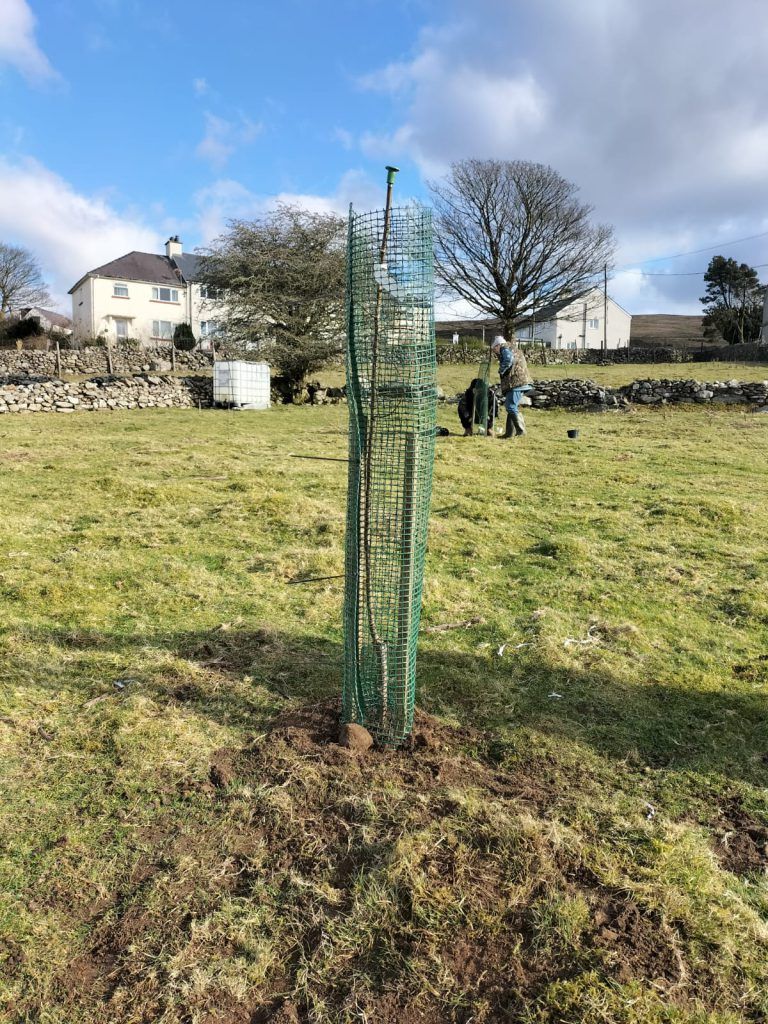
The food forest area was previously pasture, so they have been planting tree saplings into holes dug into a thick layer of grass. Some preparatory work will be needed before the shrub and herb layers can be planted, but meanwhile the area will continue to be lightly grazed by their two sheep and two Shetland ponies; tree guards will therefore need to remain in place until the animals are moved off. As usual, the effectiveness of tree guards for saplings is a key issue. Dan says : ‘We don’t know for definite that all our tree guards will work! We’ve done our homework and gone for a mix of bought and home-made guards which have then been covered in sheep wool fleece to protect from frosts, and built up with small stone cairns around their base to strengthen against the inevitable winds.’
When complete the canopy layer is planned to consist of a mix of walnut, chestnut, ginkgo, pine, mulberry, cherry, apple, plum, fig, medlar and monkey puzzle, plus pre-existing alders already growing on the perimeter, which will eventually be integrated into a windbreak.
The shrub layer will include redcurrants, blackcurrants, jostaberries, bladdernut, lime (for salad leaves) and gooseberries as crop producers, plus autumn olive and Siberian pea shrub as nitrogen fixers.
The herb layer will comprise comfrey, rhubarb, mint, wild garlic, hyssop (for bees), strawberries, lupins, plus perennial vegetables such as Taunton Deane kale, Babington leeks, and walking onion. The climbers would be predominantly grapes and kiwis, and possibly Caucasian spinach.
They see the food forest as an integral part of a wider vision to use their land to make freshly grown food available to as wide a range of local people as possible, while transforming their plot into a sustainable, biodiverse ecosystem. As well as growing for their own consumption the owners are beginning to produce a surplus from their kitchen/ market garden, that they are able to sell in the ‘zero waste’ shop they run in their nearest town. They are looking at creating a small selling area adjacent to the road so that they can also make fresh produce accessible to people in the village. They also envisage having open days/events for different crops as they ripen to allow local community members to enjoy picking their food themselves. Dan and Cherise understand that this is very much a long-term project, where the elements of the food forest will be established over several years, with edibles of various types becoming available over a time span of at least a decade. I hope that the local community will come to realise what an asset Maes Gwyn could become, and will admire and support their commitment.
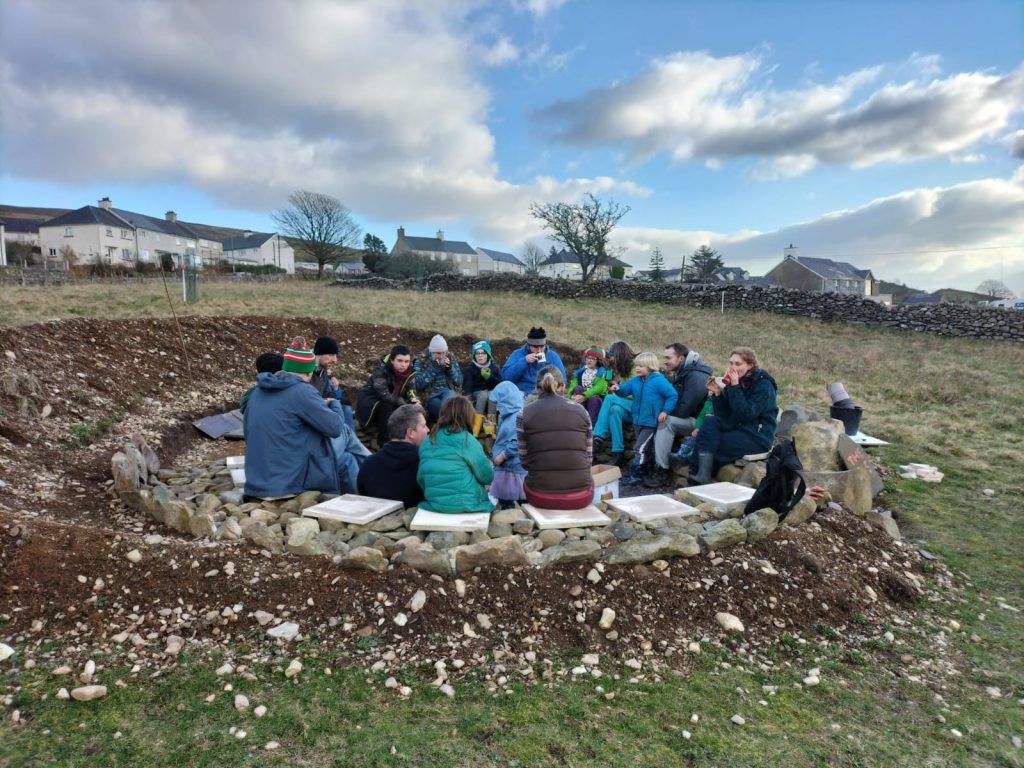
The fire pit sits between the kitchen garden and the forest garden space. Dan says: ‘It will be the hinge between the two in time; a natural place to be no matter which part of the land we’re working on. It was inspired by another farm we’d visited and deliberately dug earlier this past winter as part of efforts to be more open to having visitors and volunteers on the land – an integral part of the whole project.’


